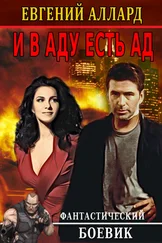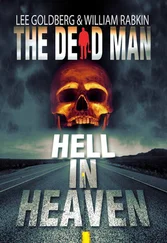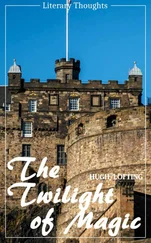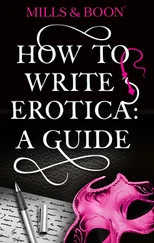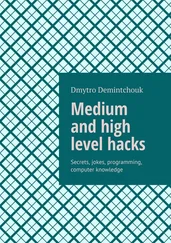“Son of a bitch, Jim! Did you see that?” I hollered into the intercom.
I hauled the Loach around to hover right above the spot. Then Parker and I saw the two dark brown eyes staring up at us from a hole dug into the ground under an area of pushed-up dirt created by the Rome plow months before.
Without me saying a word, Jim Parker opened up. I winced at the explosion of the M-60 right behind my head. The enemy soldier jerked violently and slumped over in his hole.
I got on the radio to Sinor. “Three One, One Six. We got a dink. The gunner shot a dink dug into the grass up under a Rome plow mound, not more than ten feet off the west side of the highway. I think they’re all over the place—up close, not in the jungle! They’ve dug in spider holes right on top of the convoy!”
The head of the convoy was just seconds away at this point, heading right into an ambush. Sinor immediately called the convoy commander on FM.
The minute the convoy commander got the word that the enemy was close to him, I knew he would order all convoy weapons to open up on both sides of the highway, and woe be to the Loach pilot who was out there when all that ordnance started to go off.
Three One knew it too. “Get the hell out of there, One Six,” he yelled. “Get up to altitude, NOW!”
But which way can I go? I thought. No time to get any altitude. And I can’t go parallel to the convoy, or I’ll make myself a tailor-made flank shot for every gun—ours and theirs. So I pulled the hardest right turn I could, made a 180-degree arc, and headed back south again—right on top of the northbound convoy. I figured the safest place for a Loach at that moment was five feet off the tops of those trucks, where hot rounds would least likely be crisscrossing.
I barely made it on top of the convoy when all hell broke loose. The enemy, now fully alerted by Parker’s shooting of the soldier in the spider hole, sprung its ambush. They pushed aside the overhead camouflage and rose up out of their holes, guns blazing. At point-blank range, they opened up into the convoy with everything they had: AK-47s, RPGs, grenades, SGMs. The column simultaneously let go with their machine guns, 90mm cannon firing canister rounds, and every other weapon carried on the vehicles in the* convoy. It was like one giant, sustained explosion. Bullets flew everywhere. Deafening noise erupted. Smoke and flying debris engulfed the entire convoy. And there, in the midst of that sudden hell, were Parker and me flying at antenna level, straight down the back of the convoy, trying our best to stay out of the way of both enemy and friendly fire.
As the convoy charged north, we flew south, blistering along at well over one hundred knots, Parker working with his M-60 from the right side of the aircraft. His tracers were impacting on the spider holes as we ripped past, his targets not more than ten to twenty yards from his muzzle. We were so low that if someone had reached up out of a truck or tank turret, they probably could have caught our skid.
Suddenly, not more than a hundred yards to my front, a five-thousand-gallon tanker truck took a direct RPG hit, and the diesel fuel it was carrying exploded like a nuclear bomb. Sheets of flame, parts of the truck, smoke, and dust shot up, momentarily blinding me. The little OH-6 lurched violently with the shock of the explosion, as though a giant unseen fist had landed a smashing blow to the nose of the aircraft.
I jerked aft as hard as I could on the cyclic and yanked in a load of collective. The resulting g’s nearly sent my buttocks through the armor plate in the bottom of my seat. I don’t know how Parker was able to hang on.
As the fast-reacting Loach wrenched up over the eruption, I said silently, “God bless this helicopter!” then yelled to Sinor over UHF: “Three One, One Six. I’m coming up to altitude. We’re OK, but that was close! You’re cleared in. I’m out of the way. Hit the tree line to the west of the convoy.”
The battle between Charlie and the convoy continued with ferocity. Shortly after the tanker truck exploded, a five-ton rig near the middle of the convoy was hit. It was loaded with ammunition—enough to knock everything around it off the road. Then a tank went up, its turret flying into the air fifteen to twenty feet, turning a somersault, and crashing back down.
The convoy’s intent was to continue moving north as fast as it could, and it managed to do just that. If a vehicle was hit, the driver made every attempt to get it off the road under its own power. If it was hit too badly to move itself out of the way, the driver behind rammed it and pushed it off. The key was to break free of the killing zone and accelerate out of the ambush area, while pumping all possible fire into the ambushers to gain fire superiority.
The enemy’s RPGs did the most damage. Once a vehicle was disabled with rocket fire, the automatic weapons would open up. Charlie had prepared well; he was hitting hard from a position of advantage.
When the enemy had lost the element of surprise and the defenders began to gain the firepower advantage, the enemy troops usually would attempt to break contact and fade into the jungle before an organized pursuit could be launched. With this in mind, I keyed Sinor as he pulled out of his rocket and minigun run along the western line. “Three One, let’s cut off the avenue of retreat. Work up some artillery and give us two brackets of artillery fire on both sides of the road running north and south. We’ll pin them against the highway with no back door.”
Moments later artillery began to pound down, blocking any enemy effort to disengage at the highway and make an escape to the jungle. Adding to the enemy’s problems, fast movers (USAF close air support) were called in to put down bombs and napalm all along the tree line on both sides of the highway. Then the APCs that had stayed behind the convoy were poised to sweep the Rome-plowed area and mop up the ambush survivors.
Parker and I had to return to Lai Khe to rearm and refuel; while we were on the ground it soon became evident that everybody out there—the armor, artillery, close air support, the Cobra—had the situation in hand. Working in close support on the flanks, they had knocked out virtually all resistance. The enemy was badly decimated and the survivors were trying to make it back to their base camps.
Several hours later the ambushed convoy made it to Quan Loi. We had six or eight vehicles destroyed and many more damaged in the brief, fierce battle.
With the convoy gone and the shooting over, our local security forces situated near the site of the ambush were preparing to sweep through the area to check on enemy dead. They needed me back on station to scout out ahead of the ACAVs and provide cover. Once back at the contact area, I radioed Sinor, who was still orbiting over the ambush point, and told him that I was going down out of altitude to make a pass over the Rome-plowed corridor on the west side of Thunder Road. Then I would work my way over to the tree line to see if any enemy might have made it to the jungle.
I made my first pass from south to north right down on the deck ten to fifteen yards out from the highway. After completing that pass, I keyed Sinor with a report. “OK, Thirty-one, this is One Six. I don’t know how bad the convoy got hurt, but we really nailed their asses down here. I see forty to fifty bodies strewn around, many body parts, numerous blood trails and drag marks. Looks like the remnants of the enemy force moved off to the tree line on the west, dragging along as many of their KIA and wounded as possible. But they’ve left a lot of dead and a lot of equipment.”
After several more passes up and down the Rome-plowed area, I moved over to the trees and began to look for trails of the enemy retreating into the jungle. I was about three hundred yards deep into the tree line, right at the area where our Thunder II base camp was located, when I heard what sounded like a quick, sharp explosion. Suddenly my aircraft became almost uncontrollable. The vibration was so extreme that I couldn’t control the ship up or down. I knew I had been hit, undoubtedly in the rotor system.
Читать дальше


